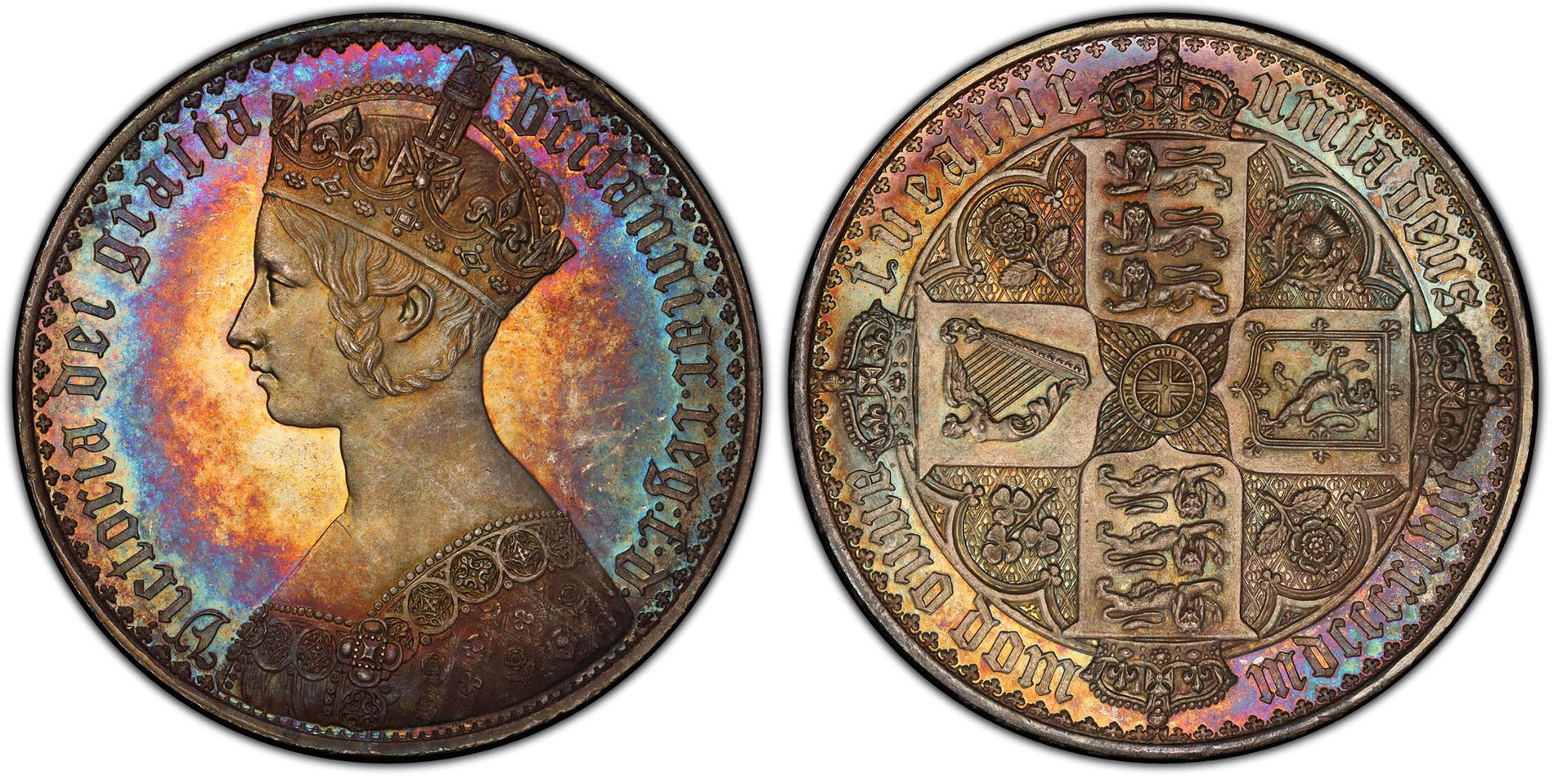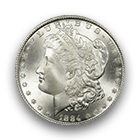One of the greatest aspects of coin collecting is learning the history and symbolism behind the designs. One series I find particularly fascinating and about which very little is known are Saint Lambert’s Communion Tokens. Minted in The Netherlands in the 17th century, these unusual and rare tokens display a skull and crossbones motif on the obverse and flames above and below crossbones on the reverse. The only exception in this design is the first variety, minted in 1635.
At first glance, one might suspect that these tokens could have an occultic meaning or some affiliation with pirate lore. However, this is not the case. To fully appreciate these tokens, one needs to know a little bit about European church history, what the symbols represent, and why these pieces were made. So, let’s dive in and investigate the fascinating history of Saint Lambert’s Communion Tokens!
Who Was Saint Lambert?
Lambert of Maastricht, commonly referred to as Saint Lambert (circa 636 A.D. through circa 705 A.D.), was born in Maastricht, a city in the province of Flanders (The Netherlands). He was the bishop of Maastricht-Liège from about 670 A.D. until his death.
While few details of Saint Lambert’s life are known, historians and religious scholars have agreed that he was murdered as a result of admonishing the Merovingian Duke Pepin II (Pepin of Herstal) for adultery with a noblewoman named Alpaida. Saint Lambert is said to have been killed with a javelin while conducting Mass in Liege’s Chapel of Saints Cosmas and Damian by soldiers under the command of Alpaida’s family.
Many believe that Saint Lambert lost his life and obtained sainthood as a result of his deep conviction to defend Holy Matrimony, similar to the example set by John the Baptist when he confronted King Herod as narrated in the Book of Matthew 14:3-14 of the Christian Bible.
Saint Lambert’s body was entombed at Maastricht and later, it was moved to Liège, in the eastern part of modern Belgium, where his relics are honored to this day.
Why Did the Church Make Communion Tokens?
In the mid-1500s, French Huguenots and Scottish Presbyterians began implementing the use of communion tokens. Known in old French as “méreau” or “méreaux,” the word “méreau” comes from the Latin word “merere,” which means to deserve or deserving. Parishioners needed to pass a personal spiritual examination of their life prior to taking communion.
Before taking communion, the elders of the church would interview each person and distribute the tokens to those who prepared their hearts to receive it. Prior to taking the communion elements (typically bread and wine), the believer would give the token to the minister. In addition to being used for communion, these tokens were also likely used during the feast day celebrations commemorating the anniversary of Saint Lambert’s remains being placed in the cathedral at Liège.
Saint Lambert Token’s Design Elements – There’s More Than Meets The Eye!
Most will agree that the design of Saint Lambert Communion Tokens is quite striking and mysterious. The symbol of the skull and crossbones was used for well over a thousand years by the Romans as “memento mori,” which is a Latin term for “remember death” or “remember you must die.”
In ancient Rome after a major military victory, the triumphant general, known as a “triumphator,” would be cloaked in royal purple and ride in a golden chariot drawn by four horses. He was then paraded through the streets in a grand procession with his army, prisoners, and the spoils of war.
The general was idolized, viewed as divine by his troops and the public alike. Riding in the same chariot, standing just behind the worshiped general, was a servant. The servant’s sole responsibility for the entirety of the procession was to whisper in the general’s ear continuously, “Respice post te. Hominem te esse memento. Memento mori!” “Look behind you. Remember, you are human. Remember, you must die!” The servant served to remind the victor at the peak of glory, this god-like adoration would soon end, while the truth of his mortality remained.
Memento mori symbols can be seen on some Roman and early Christian tombs. The Knights Templar commonly used it around the 13th century. Most notably, pirates used variations of it on their flags during the golden age of piracy.
Whether these tokens were used to participate in communion, anniversary feasts, funerals, or other church functions, the message they convey is that we are all mortal and need to consider where we will spend eternity.
The Inspiration Behind the Design
To get a better feel of what may have gone through the mind of the designers of these tokens, one must remember that these were specifically made for the Cathedral of Saint Lambert in Liège, roughly a thousand years after the saint’s death.
The flame symbols on the reverse of some of the tokens have biblical significance and most likely represent the life-transforming power of the Holy Spirit mentioned in the Book of Acts. The flame images may also represent Moses’s encounter with the burning bush found in the Book of Exodus.
The Five Types of Saint Lambert’s Communion Tokens
There are five different varieties of Saint Lambert’s Communion Tokens, each having a different style of skull and crossbones on the obverse.
On the obverse of the first variety, dated to 1635 (which is by far the rarest), you see the typical skull and crossbones, only here, the skull is superimposed over the crossbones in a saltire or Saint Andrew’s cross pattern. The other four varieties show a skull placed above crossed bones. The reverse of the 1635 shows a bishop’s miter (a headdress worn by Roman Catholic bishops) in front of a crosier (a hooked staff carried by a bishop as a symbol of his pastoral office) and a sword.
The legends on the obverse of these tokens vary slightly, but their meaning is the same.
“ANNIVERSARIUM,” “ANNIVERSAR,” and “ANNIVERSARIVM” are Latin variations for the word “anniversary.” The legends on the reverse “ECCLESIAE LEODI,” “ECCLESI LEODI,” or “ECCLE.SIÆ.LEOD” are Latin variations for the phrase “The Church of Liège.”
These tokens were likely commissioned by the church and minted by a local blacksmith on a screw press rather than being hammer struck. There are a number of die variations for each issue, and each piece has its own unique and subtle characteristics.
Here are images of the other four varieties:
Although Saint Lambert’s tokens are becoming very popular, they are extremely difficult to find in higher grades of preservation. Completing a set of all five will prove to be very challenging, to say the least, and often will be like finding a needle in a haystack!















 Copper & Nickel
Copper & Nickel
 Silver Coins
Silver Coins
 Gold Coins
Gold Coins
 Commemoratives
Commemoratives
 Others
Others
 Bullion
Bullion
 World
World
 Coin Market
Coin Market
 Auctions
Auctions
 Coin Collecting
Coin Collecting
 PCGS News
PCGS News